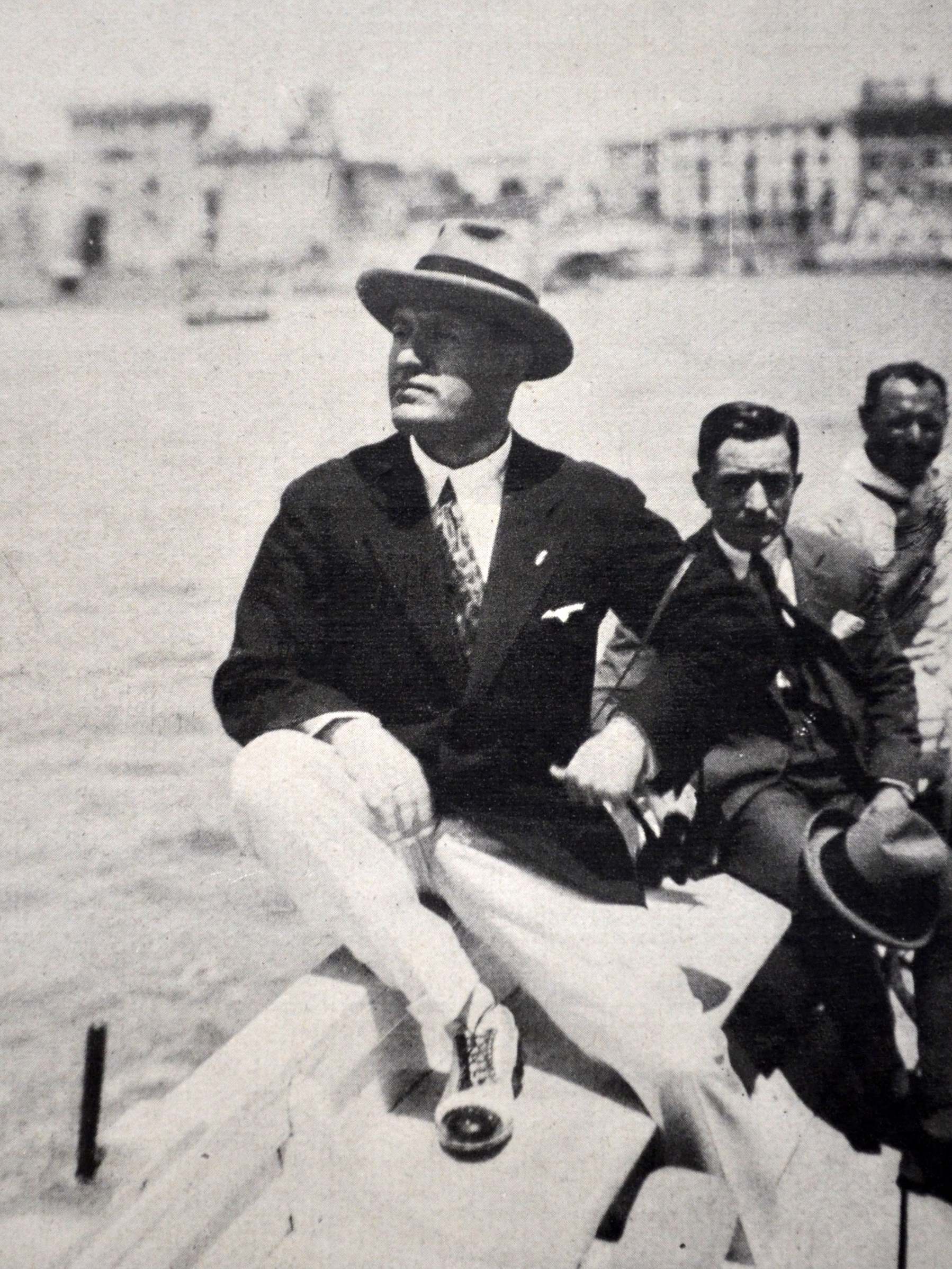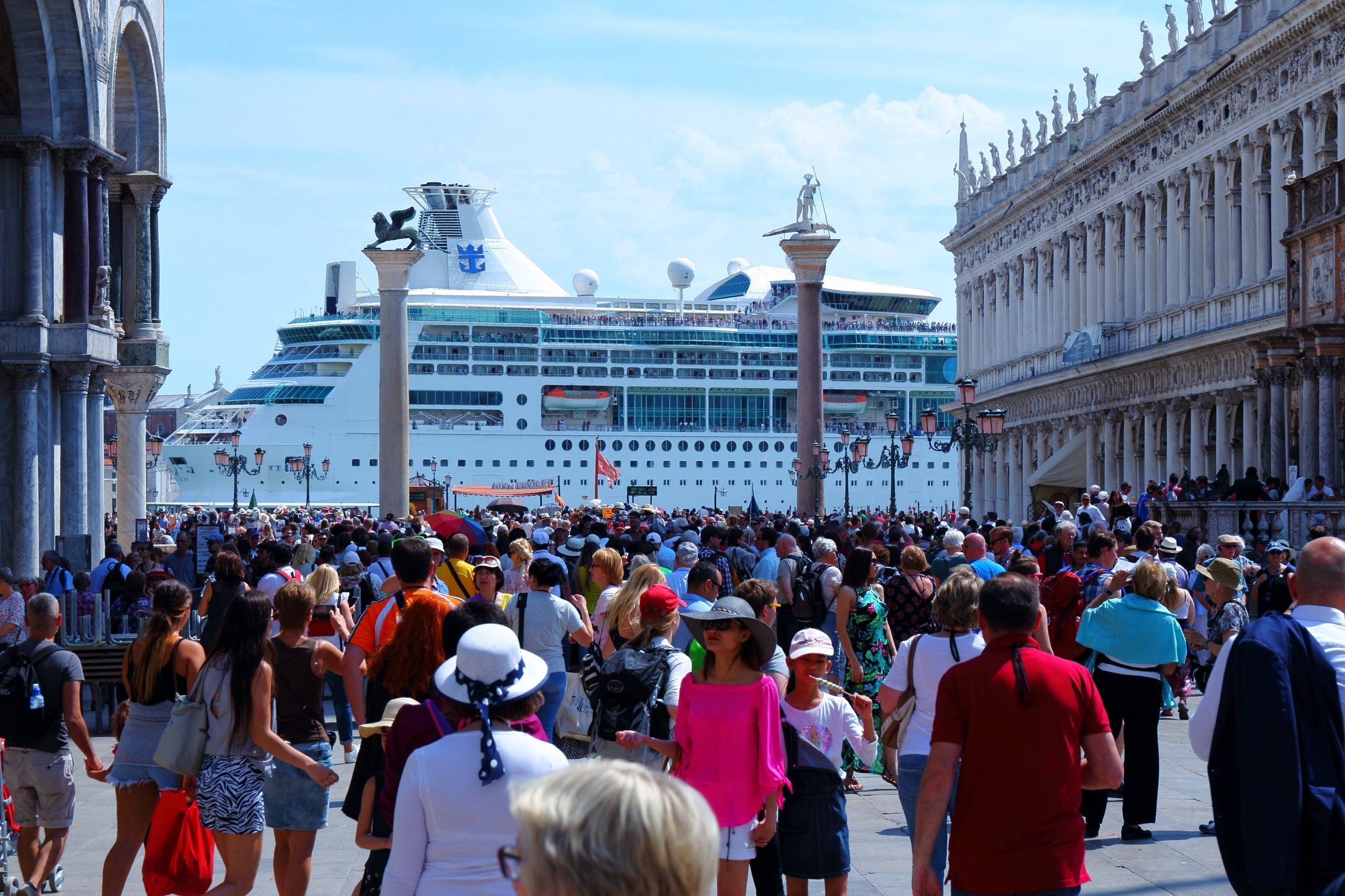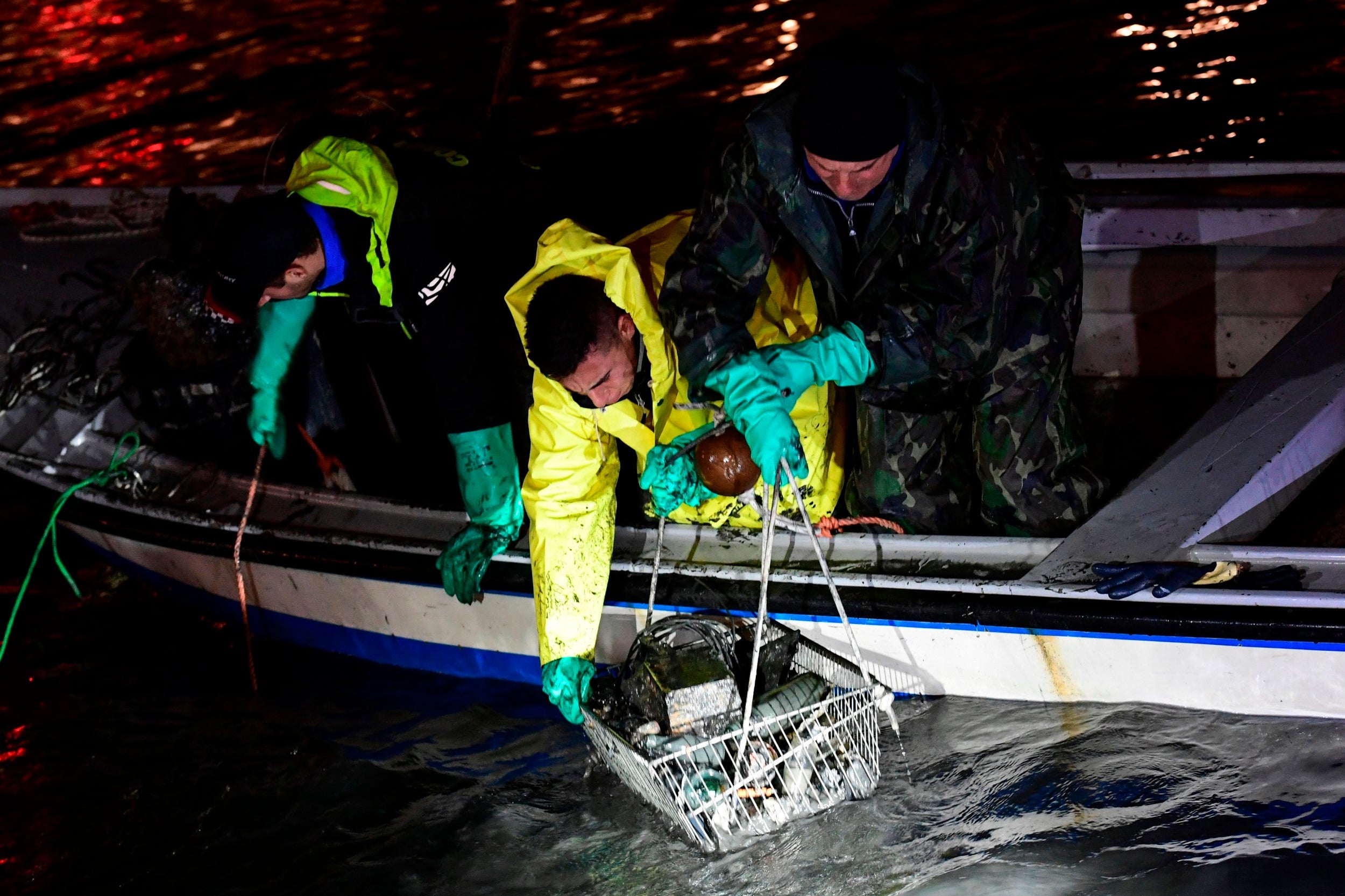Fears for Venice run far deeper than the flood waters that have wounded the city
After the worst flooding in decades, Kim Sengupta talks to Venetians who believe their future depends on separating from the mainland


Looking out of the window as the rain lashed their homes in Venice, Jane da Mosto and her neighbours could see the Grand Canal overflowing and the water being driven up to head height in wave after wave. Two people were to die on the first day of the deluge last week. More than 80 per cent of Venice, a Unesco world heritage site, was underwater. The Basilica, the cathedral church of the city, and St Mark’s Square were flooded. Modern as well as historic works of art suffered, including one of Banksy’s most famous drawings, that of a refugee child submerged at Campo San Pantalon.
Power was cut to thousands of homes, businesses and schools and there has been structural damage: a huge programme of recovery is now needed. The Italian government declared a state of emergency with Prime Minister Giuseppee Conte pledging that all help necessary will be provided. The flooding, he said, was “a blow to the heart of our country, it hurts to see the city so damaged, its artistic heritage so compromised...”
Archbishop Francesco Moraglia lamented that “ the Basilica is suffering structural damage because the water has risen and so it’s causing irreparable harm. I have never seen anything like it. Venice is a wounded city.” He warned that it “may keep on being wounded every year in the same way.”
The city’s mayor, Luigi Brugnaro, spoke of “hundreds of millions of Euros in damage”. He was also quick to apportion blame. “This is the result of climate change,” he tweeted. “The cost will be high, the government must now listen.”
But there are many in Venice who believe that climate change is not the only factor. The actions of Brugnaro and other politicians, focusing relentlessly on commercial gain, have also played a major part in causing the calamity. “I wish the Mayor was here, I would like to use his head as a mop,” commented Da Mosto, an environmental scientist who had been active in conservation in Venice for 25 years. “There is a feeling here that the contempt among some officials for the people and civilisation of Venice is now palpable. It’s like living under an oppressive regime.”
Da Mosto, the co-founder of the group “We are here Venice” and others who are like-minded are now pressing for regime change. After a prolonged campaign they have won a court case to hold a referendum, scheduled for 1 December, which would separate the city from mainland Italy, gain autonomy and have its own administration.

A legal challenge was launched by the mayor, Brogano, to block the vote. He failed and has since been urging Venetians to boycott the polls with the slogan “small is beautiful, but big is better”.
Venice’s sobriquet of La Serenissima was bestowed first on the Doge and Signoria, the ruling council, and then to the Republic of Venice by the Byzantines. It means “Most Serene” but it also stood for sovereignty, which survived for centuries and created a vibrant mercantile empire. The present local government was the creation of Benito Mussolini with Venice, on the lagoons, merged with Mestre on the mainland, using the adjacent industrial area of Marghera for manpower.
The result, say the Venetian campaigners, has been continuous pressure to exploit the city’s history, arts and culture for money. This has led to cruise liners off the coast with around 32,000 passengers disembarking on average every day between April and October each year. In total, around 25 million tourists a year come to the city with the figure expected to rise to a staggering 38 million by 2025. While the tourists are pouring in, the city has seen an exodus of Venetians. The population was 170,000 last century, now it’s down to 53,000 with more than 50 per cent of the residents aged 65 or over.

Around a thousand people, on average, leave the city every year. One of the main reasons for this haemorrhage, especially among the young, are the rocketing rents. This is caused by rules in the wider region which allows hotels and guest houses to expand into residential areas and take over homes. In the past four years Airbnb rentals have more than tripled from 2,441 to 8,320, and this trend, too, is expected to continue.
The desire for quick profit has also seen a change in the commercial face of Venice. Craft shops and family businesses are closing down, along with neighbourhood cafes and restaurants. The tourist hordes are going for cheap souvenirs, pizzas and kebabs.

There is now so much traffic on the Grand Canal that the gondola crossing point from the Fish Market to Santa Sofia, a typical routine trip, recently put up a sign saying they may not be able to ferry people due to waves making the journeys unsafe. The gondoliers also know only too well that along with the traffic and the tourists has come trash. Last weekend they had to put on diving gear to collect piles of rubbish from the bottom of the Grand Canal.
If we win the referendum, quality of life would improve and political representations would be more in touch with life in the city
Only six out of 30 members of the council live in Venice and none of the deputy mayors are from the city. The mayor himself lives in Mogliano, beyond Mestre. This has led, say the campaigners, to many Venetians feeling those in charge have little empathy with the city and its concerns. “The people ‘in charge’ of Venice are increasingly out of touch and have different priorities to the residents,” maintains Da Mosto, who is British but has lived in Venice most of her life.
“Their priority seems to be speculative development and selling assets. If we win the referendum, Venice would be eligible for status as a zona franca with special tax regimes for residents and businesses. This would be the basis for reviving the population, attracting young people and entrepreneurs, while cleansing the local economy of dependence on mass tourism. Quality of life would improve and political representations would be more in touch with life in the city.

“Tourism in Venice is an extractive industry. Mismanagement of tourism while the global industry has been expanding fast has definitely exacerbated the situation. We see one of the consequences in residents leaving because income from temporary accommodation out-competes demand from ordinary citizens.
“Shops are of poor quality with generic mass-produced tat shipped in and piled high. The shops are run by people with no connection to Venice. I sometimes feel that bits of the city have become extensions of cruise ships,” adds Da Mosto
The council wants to point out that it has taken measures to counter the tourist tide. In November 2017 it announced that it would stop cruise ships from passing through the Grand Canal and from August this year it began limiting the number of cruise ships which are allowed to enter the historic centre. A plan has also been put forward to start charging day-trippers coming into the city up to 10 Euros in the peak season.
The council’s financial officer, Michele Zuin, held that mutual balance between the two parts would broken by separation. “The cash that tourists spend on water buses in Venice helps Mestre to pay for its public transport... while the value of Venice’s palazzos acts as guarantee for the loans taken out by the council.” Venetians on the other hand, he warned, could face steep increases in the price of public services, including the already “exorbitant cost of rubbish collection”.
Mayor Brugnaro is adamant that the future lies in staying together. “Is it better to have a bigger and stronger city, or the chopping up of thousands of bell towers? Anyhow, history demonstrates that it is better to be bigger and stronger. We need to actually expand our horizons, Venice should once again be a capital of the world,'' he has declared.
Opinion polls show a majority for separation in Venice, but against it in Mestre, which has double the number of voters. But Da Mosto said that 30 per cent of the voters were undecided and her side is making a concerted drive to win them over before the referendum. Separation, she insisted, would ensure “Venice wouldn’t die and Mestre wouldn’t die next. Mass tourism seems to be only common denominator and growth strategy adopted by the administration.
“Huge hotels and hostels have been built in the past three years near Mestre train station that funnel crowds into Venice every day. If Venice becomes more diversified with a vibrant economic and social path then Mestre will also benefit in terms of new productive activities and logistics ... we are sure.”
Da Mosto also disputed that the people of Mestre are benefiting from tourism in Venice and thus benefit from staying under the current arrangement. “Analysis of the municipal balance sheets and budgets reveal that income from local taxes in Mestre is actually helping to cover the excessive externality costs of tourism in Venice”, she maintained. For Claudio Vernier, president of the association of Plaza San Marco, representing the businesses in the Square, the most pressing need was to stop the flooding, and what caused it, from recurring.
“What happened this week is extraordinary. The force of the water was such that it was a like big ocean tide coming in. This has caused a lot of damage. We now have to wait to see just how bad it all is after a couple of days of drying. We need to tackle what’s causing it, the Venice we know cannot survive such disasters.”
Join our commenting forum
Join thought-provoking conversations, follow other Independent readers and see their replies
Comments